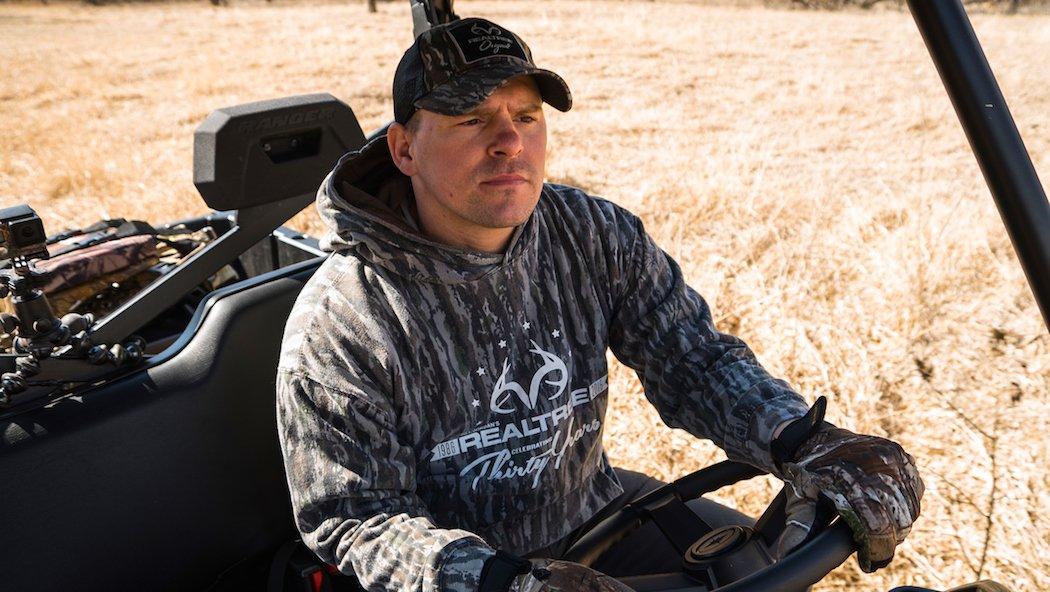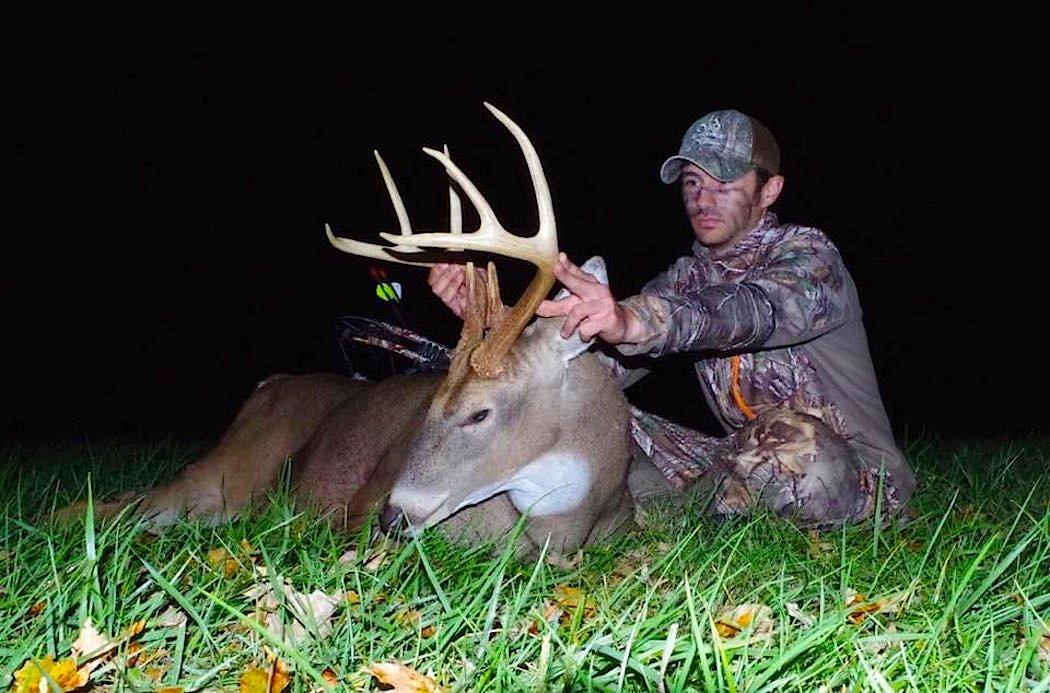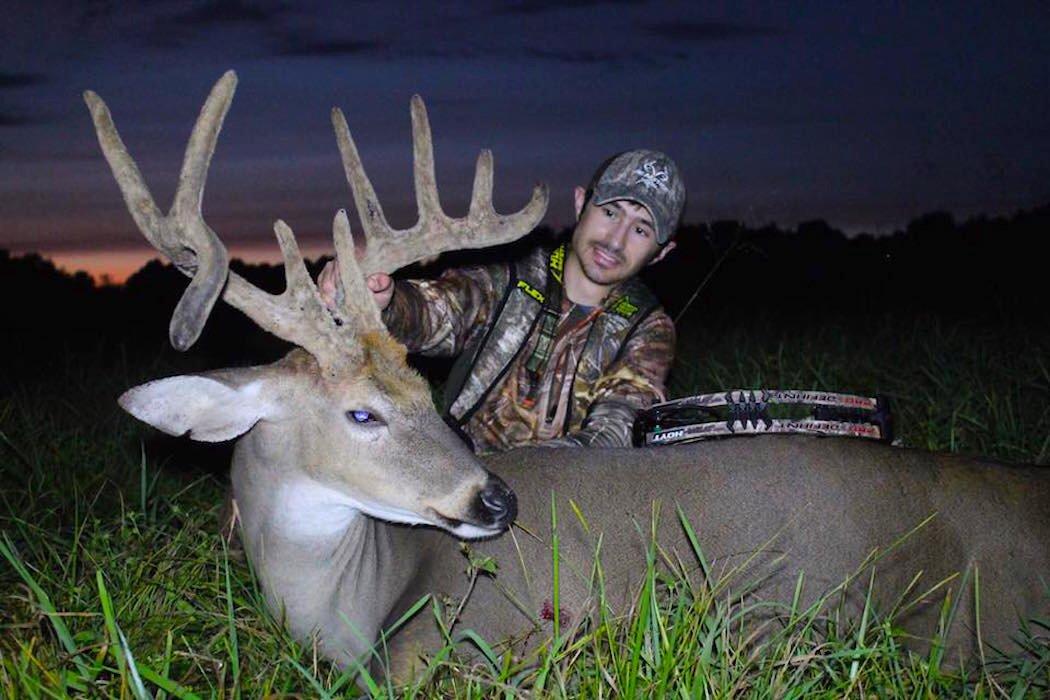Are You Doing What It Takes to Kill Big Deer?
The hunt for big whitetails is never over. Hunting trophy whitetails is an endless journey that never truly ends. It's all a part of the experience. And for the practical hunter, the work put in will equal the reward that comes out. Now is the time to put in that work. Here is a seven-step plan to kill a giant whitetail next season.
1. Bedding Areas
Bedding areas can be easy to locate as long as you put in the legwork. First, follow the trails you find around food sources. Not all, but most will lead back to bedding areas. You'll know a bedding area when you find one. Beds will be everywhere. Telltale signs of beds will be oval-shaped areas where the leaves and vegetation are matted down. If it is predominately a doe bedding area, multiple beds will be found in close proximity to one another. If single beds are found, you've probably stumbled across a bedding area used mostly by bucks. And don't forget to use your nose. You'll smell a bedding area before you see it.
Why It Matters: There are two main reasons for needing to know exactly where your deer bed. The first is so that you know to never penetrate these areas once the season opens. The second is so that you know how to strategically hunt around these locations as deer move to and from food sources.
One Step Further: Not only is it important to have bedding areas but it's also important to have designated sanctuaries. If you truly want to hold a lot of deer, there must be a portion of your land that remains untouched year-round. Extremely thick, overgrown areas with very dense foliage can serve as sanctuaries. These serve as havens where deer can feel safe when they can't anywhere else. If people tromp through it, it will cease to serve as a sanctuary.
Don't Miss: 8 Bedding Habits of Mature Deer
2. Food Sources

Worn trails within the timber will show exactly where your local herd is spending their time. Unraveling where deer are entering and exiting fields is even easier. Walk the perimeters of each feed field and look for trails leading to it. Most of the time, trails will serve as both entry and exit points. That said, in rare cases, some only act as one or the other. If it is mostly being used as an entrance, vegetation will be laid over in the direction of the food source. If it is an exit, it will be laid toward cover and bedding destinations.
After locating trails on field edges, follow them back into the timber. Sometimes trails on field edges will lead back to meet on a larger, more centralized trail that connects to a bedding area. Placing stands at these crossroads is an excellent way to maximize sightings during a hunt.
Why It Matters: The need to feed is the driving force behind deer behavior. Everything revolves around it — even during the rut. It is the central focal point of deer movement all year long. And it should be the central focal point of your hunt plan.
One Step Further: Something else to look for is smaller, less visible trails that parallel the larger more traveled pathways. In some cases, bucks will use these smaller trails that are further back in the cover. Older and more reclusive bucks tend to follow paths of their own. These trails are their markings.
Don't Miss: 10 Feeding Habits of Mature Deer
3. Water Sources
Water is likely the most overlooked factor in deer hunting. Deer need water. It's one of three essential needs of a whitetail. In areas with an abundance of water, this isn't as necessary and can't be used tactically as effectively.
Gear Highlight: Hoyt REDWRX Carbon RX-1 Series in Realtree Edge
Dryer areas are different, though. Concentrations of water mean concentrated populations of deer. This can be used as an advantage when choosing stand locations.
If you're having a hard time locating good water sources, consult a hydro map. It'll show you where most water sources are located. That said, remember that deer can drink from as little as a puddle. So not all sources will be visible on a map.
Why It Matters: Recent research shows that most deer go to water before food when they rise from their beds of an afternoon. If they don't have a water source in their bedding area, setting up between their bed and their cup of water can prove deadly.
One Step Further: Creating water sources and placing them in strategic locations can be a great way to draw deer in and put them where you want them. And it doesn't have to be extravagant, either. Simply dig a hole and put a kiddy swimming pool in the ground. Or, dig a hole, line it with thick plastic and cover the plastic back up. Tamp the soil and voila, you have a watering hole.
Don't Miss: 5 Watering Habits of Mature Deer
4. Rut Sign
There is no better time to scout for rut sign than now. Rubs are still visible and easy to read. Scrapes are slightly less so, but can be found.
Rub lines can be a dead giveaway of a buck's travel routes. In most cases, they will lead from its preferred bedding area to its preferred food source. Rubs might also be found between two doe bedding areas.
Scrapes will often follow the same patterns as rubs. They will also be found along field edges and close to food sources. Many will be erased from sight by now. But those that remain, make sure to remember them.
Why It Matters: It is likely a scrape will be re-opened in the same area next fall. Year after year, bucks reopen scrapes in the exact same locations. Grant it, not every scrape is in the same place. But many of them are. I would say that nearly 50 percent of the scrapes on the properties I hunt will be in the same spot each season; under the same tree, with the same licking branch. That's the wealth in remembering the ones you find. Know where they'll be before bucks make them.
One Step Further: Mark rut sign on an aerial map or GPS as you locate it. This will help you remember where you found it. It'll also help paint a picture as to how deer use the terrain, too.
Don't Miss: 7 Habits of Mature Rutting Bucks
5. Taking Inventory
Keeping your cameras out once the season closes is paramount if your goal is year-round management. Posting cameras over food sources is a magnificent way to see which bucks on the hit-list remain to see next season. It also allows you to monitor younger bucks that might get added to it next fall.
Agricultural food sources to concentrate on at this time are: cut corn, standing corn, standing beans, winter wheat, broadleaf food plots and any other available food sources in your area.
Another overlooked place to put cameras is water. Deer have to drink. Winter can be a good time to take advantage of this need.
Why It Matters: As winter progresses, waterways increasingly freeze over. Stagnant surfaces freeze, but moving water does not. This is where you should be focusing efforts. Great places to post cameras are: spring fed ponds, secluded streams near food sources, river crossings, and places where creeks split and then come back together.
One Step Further: By focusing cameras over food sources and waterways, last-minute efforts to find which bucks lived to see another season can be productive and get you excited for next season all at the same time. Take inventory of your herd. Keep all trail camera photo. Keep them categorized and organized.

6. Shed Hunting
Shed hunting is an art. Just like hunting live deer, hunting sheds requires a game plan. It starts with observation. It is crucial that you know your big bucks have thrown down their crowns before you ever go in to retrieve them. That requires both intensive trail camera work and scouting from afar. On these cold winter days, deer will need to feed. So they will be visible in open agricultural fields before dark.
On the flip side, you don't want to wait too long to go in after them. Numerous animals such as: coyotes, squirrels and other nutrient-seeking varmints will flock to shed antlers for the calcium and other minerals and vitamins they provide. This requires going in at just the right time to collect as many antlers as possible.
Not all deer will shed at the same time. There isn't a universal code that all deer follow when dropping their headgear. There are too many biological factors that play in. Testosterone levels, geographical location, physical health, temperature, weather, age and nutrition are all big influences. So when's the right time to move in?
Every season will prove different for every individual. That is why it is crucial we determine this for ourselves through scouting and trail cameras. In previous years, most of the bucks on the properties that I hunt lose their antlers between late January and early February. That said, in rare cases, I have had bucks carry them into late March and early April. But most of these instances were younger bucks 1½ to 2½ years old.
Why It Matters: Once you've determined that most all of your target bucks have shed, it's time to move in. I am a firm believer in searching every inch of ground that you can cover, but there are certain places that tend to produce more sheds than others.

Also look along trails leading from heavy bedding to food sources. Bedding areas to check will be: dense cedar thickets, south- and east-facing slopes, coniferous groves and other forms of heavy cover. It's cold. It's windy. These areas are where bucks will go to escape the inclement weather.
It's also important to move into the bedding areas themselves. Deer are spending a lot of time here now due to pressure and bad weather. It's only natural that sheds will be found there.
Don't forget to walk the perimeters of all food sources on the property. Oftentimes bucks spend a fair amount of time on the edge before moving into the open. This leads to dropped antlers on the fringes of cover. Walk these edges. Bring your binoculars along and glass out into the fields as well; sometimes they're in plain sight.
One Step Further: Even though they are reclusive, whitetail bucks are creatures of habit; even when they don't mean to be. Unless health issues or severe outside influences ensue, a buck will likely shed its antlers at the same time year after year. If you found a buck's sheds last season, think back to where you found them. Check that same place this year. It is very likely they will be in the same vicinity.
Don't Miss: 10 Reasons You Suck at Shed Hunting
7. Stand Selection
Once you key in on where deer are most apt to be, mark these areas as places to focus your efforts next fall. Carry an aerial map with you while doing your post-season scouting and shed hunting. Make notes on the map of the things you find. Chart where major trails, rub lines, scrapes, food sources and bedding areas are. Once you have this information, incorporate wind patterns to decide where you need to hang stands for the following season.
Why It Matters: The good thing about winter is that vegetation is minimal. So once stands are hung, this allows you to see what you will see while in the stand next season. This is an excellent time to trim shooting lanes and manipulate cover. After doing so, use all of your newfound information to target next year's deer.
One Step Further: Go ahead and get your homework done now. When it comes to reducing pressure, the earlier you scout the better. Post-season scouting is extremely beneficial and well worth the time spent. In the end, there is no rest for the deadliest when trophy whitetails are the target.
Don't Miss: 15 Places Big Bucks Bed That Every Deer Hunter Should Hunt
Are you a deer hunter wanting to learn how to accomplish your goals? Check out our stories, videos and hard-hitting how-to's on deer hunting.








